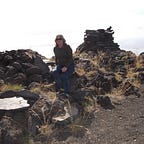The Halifax Explosion 1917
The Most Destructive Pre-nuclear Man-made Explosion Happened in Canada
In 1917, Halifax, Nova Scotia, was Canada´s main naval base, busy with transatlantic convoys trying to avoid German U-boats. Commander Frederick Wyatt was in charge of the harbour. At 9.06am on 6 December 1917, an explosion destroyed the port´s working-class Richmond district. Even compared with the slaughter in the trenches, the scale of this tragedy was unbelievable. It happened after two ships collided on a foggy morning.
SS Mont Blanc
This 3,121 ton GRT (Gross Register Tonnage) French freighter/tramp steamer was built in Middlesborough in 1899 and operated by the cargo division of Compaignie Générale Transatlantique. Her Captain was Aime Le Medec. Heavily loaded, Mont Blanc was entering Halifax to wait at Bedford Basin for a slow-moving convoy.
The United States entered the war on 6 April 1917. Mont Blanc´s cargo was an American donation for the French war effort: 223.188 kg of benzol, 56.301kg of guncotton, 300 rounds of ammunition, 1.602.519kg of wet picric acid, 544.311kg of dry picric acid, and 226.797kg of TNT.
Although 2.925 metric tonnes (3224.3 US tons) of explosives was basically a floating bomb, Mont Blanc´s crew did not fly a red flag to indicate danger. The red flag could draw attention of German ships, and was only legally required when loading or unloading.
As well as the crew, only a few port officials knew about Mont Blanc´s cargo, because on 5 December Pilot Francis Mackey, who was to guide the ship, had asked for “special protection” for her. None was provided. In the morning, the crew urgently needed to enter the harbour, away from U-boats.
SS Imo
A 5,043 ton (GRT) Norwegian steamship, Imo was built in Belfast and launched in 1889. She was chartered by the Belgian Relief Commission and going to New York to collect relief supplies for Belgium. Captain Haakon From commanded, and William Hayes was Pilot. Being neutral, she was low priority and still refuelling when anti-submarine nets were raised the night before. Cleared for departure next morning, Imo was hurrying to make up lost time.
Being in ballast, this long, narrow, ship´s propellers and rudder were high in the water, making her difficult to steer. A tramp steamer, SS Clara, signalled Imo to stay on the wrong side of the Narrows, then a tug, Stella Maris, wanted to pass. This forced Imo further to the Dartmouth side.
She was still on the wrong side when Mont Blanc, travelling fast in the opposite direction and with right of way, sounded a single whistle blast for Imo to get out of her way. Imo´s crew responded with two whistle blasts, signalling they would not change course. Pilot Mackey ordered Mont Blanc to steer hard to starboard but at 8.45am, with the ships almost parallel, Imo´s crew tried, too late, to reverse.
The Ships Collide
Original uploader: Fredrik at English Wikipedia., CC BY-SA 3.0 <http://creativecommons.org/licenses/by-sa/3.0/>, via Wikimedia Commons
Imo´s bow struck Mont Blanc, breaking barrels stored on deck. Benzol flowed into the hold. As Imo disengaged from the collision, sparks ignited the vapour and started a fire, which attracted crowds wanting to see the spectacle. Captain Le Medec ordered his crew to abandon ship, and they rowed to shore. They tried to alert sightseers to the danger but there was too much noise, and Nova Scotia was British Canada. Even if they heard the warnings, few people spoke French.
Crewless, Mont Blanc drifted towards Pier 6 at the narrowest part of the channel. The crew of Stella Maris tried to extinguish the fire and asked for a hawser to tow her away from the pier. Then Mont Blanc exploded, throwing Imo onto the shore, killing Captain From and five others.
A high pressure blast wave from the explosion travelled at over 1.000 metres (3,300 feet) per second at temperature 5.000 degC (9,030 degF). It was felt over 321.9km (200 miles) away, and was followed by a tsunami 8 metres (60 feet) high. The Richmond District was destroyed, including factories, and the railway depot.
Mont Blanc was in pieces, some of which landed miles away. Nine other ships, including Stella Maris, were lost with her. Estimates of victim numbers vary; 1,782 people were confirmed dead in the explosion or from injuries, some died in hospital later, others were never found.
Fires broke out as stoves were knocked over. Oily black rain penetrated everything. Around 9,000 people were injured, and 25,000 people lost their homes. The situation was complicated by a blizzard overnight; many trapped in wreckage died of exposure, and snow delayed rescue work.
After the Explosion
After the worst events, there is always solidarity. As news of the disaster spread, people rushed to help. Donations arrived from all over the world. First to respond were other parts of Canada and also Massachusetts, which sent medical and other relief. Nova Scotia still sends a Christmas tree each year to Boston in gratitude.
The initial Wreck Commissioner´s Inquiry, under Justice Drysdale, blamed only Mont Blanc. Captain Le Medec, Pilot Mackey, and Commander Wyatt were arrested, but charges were dropped in March 1918. After appeals to the Canadian Supreme Court (May 1919) and the Judicial Committee of the Privy Council (March 1920), both ships were found to have made navigational errors, and judged equally at fault.
One surprising survivor was SS Imo. Badly damaged by the blast, she was repaired, and returned to service in 1918, but sank in 1921. Divers exploring the area where Mont Blanc exploded found no crater under her position, meaning the solid bedrock deflected the blast upwards, so its full force hit Halifax.
Until recently the town had many survivors of the explosion, but people did not often talk about it. In working-class neighbourhoods like Richmond, bad news was common, and everyone got on with life, whatever happened.
Sources
https://en.wikipedia.org/wiki/SS_Mont-Blanc
https://en.wikipedia.org/wiki/SS_Imo
https://military-history.fandom.com/wiki/Halifax_Explosion
https://maritimemuseum.novascotia.ca/what-see-do/halifax-explosion
Halifax Explosion Survivor, Jim Cuvelier: “People Tried to Forget It,” The Canadian Press, 2017
